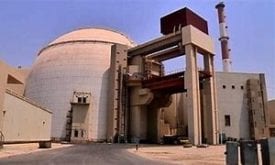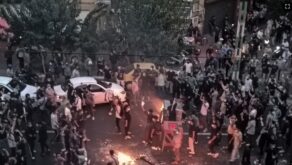Iranwire – Unexpected news surfaced on Saturday, January 9: During a televised speech, the Supreme Leader Khamenei ordered a ban on American and British coronavirus vaccines. The Americans and the English, he said, “are not trustworthy or reliable. I don’t know, perhaps they wish to test a vaccine on other nations to see if it works or not. And of course, I do not trust the French either.”
Following this speech, the spokesman for Iran’s Red Crescent Society announced that the importation of 150,000 doses of Pfizer vaccine that had been donated to Iran by philanthropists had been canceled.
On the same day, during a meeting of the National Coronavirus Taskforce, President Rouhani announced: ”We will not put people to the test of foreign vaccines. The Ministry of Health did not accept the foreign vaccine and did not let people to be tested by the companies, and I assure people that this has never happened and will not happen”.
Although Tehran is now in a yellow state of alert when it comes to the Covid-19 pandemic, air pollution in the city remains at an “unhealthy” level for the third straight week and the government continues to reject calls for lockdowns in the nation’s capital and other metropolitan areas to reduce air pollution. Experts believe that air pollution contributes to the spread of coronavirus because, in addition to other negative effects, pollutant particles can carry the virus.
The New “Blue” Alert Level
Meanwhile, Masoud Mardani, a member of the National Coronavirus Taskforce’s Scientific Committee, announced that a new alert level, identified by the color blue, has been added to existing alert levels of red, orange, yellow and white to identify cities after their alert level has been downgraded from yellow. He emphasized that a blue state of alert does not mean that coronavirus has been obliterated in that particular city.
Permits to travel between cities in yellow and blue states of alert are no longer needed, announced Hossein Ghasemi, secretary of the National Coronavirus Taskforce’s Security and Social Affairs Committee. He added that other restrictions remain in place and vehicles with non-local license plates are banned from entering cities in red or orange state of alert.
Since Tehran is now in a yellow state of alert, vehicles with a Tehran license plate no longer need a permit to travel to 219 yellow and 192 blue cities but they are still banned from entering into seven red cities and 30 orange ones.
Provinces Round-up
With the hospitalization of 218 more people with coronavirus in the last 24 hours the number of hospitalizations in Mazandaran reached 1,279. Unlike other Iranian provinces, coronavirus has been surging in Mazandaran and in the last week the number of cities on red alert in this province has increased from four to six. During the same 24 hour period, 198 people with suspected Covid-19 were discharged from hospitals run by Mazandaran University of Medical Sciences. They have been instructed to remain in quarantine at home until they have fully recovered.
Dr. Alireza Zali, director of Tehran Coronavirus Taskforce, reported that in the last three weeks the number of new coronavirus infections, hospitalizations in common wards and intensive care units and outpatients had fallen in Tehran province. According to him, since November 21 the number of Covid-19 patients in common wards had fallen by 60 percent compared to the two previous months. In the same period of time, he said, ICU hospitalizations fell by 36.5 percent and the number of outpatients by 60 percent.
Also, Zahra Sadr-Azam Nouri, chairwoman of Tehran City Council’s Health Committee, reported that the number of coronavirus infections and fatalities in the city of Tehran had fallen by 80 percent compared to the two previous months.
Qazvin province and specifically the city of Qazvin are still in a state of yellow alert, as they had been the week before.
In Bandar Abbas, capital of Hormozgan province, 17 guests who had attended a reception tested positive for Covid-19 in the last 24-hour period. Fatemeh Noroozian, spokeswoman for Hormozgan University of Medical Sciences, reported that the average age of people with Covid-19 in the province is 48, the average age of hospitalized coronavirus patients is 53 and the average age of Covid-19 fatalities is 63.
According to her, 78 percent of coronavirus infections have occurred in cities and 32 percent in rural areas of the province. In the last week, 142 more people with Covid-19 were hospitalized in the province, while 163 were discharged and currently about 750 people are quarantined at home.
Currently, 309 people with suspected and confirmed cases of Covid-19 are hospitalized across Alborz, including 31 who have been admitted to hospitals in the last 24 hours, reported Dr. Mohammad Fathi, president of Alborz University of Medical Sciences.
In Kermanshah, 40 more coronavirus patients were hospitalized and 43 were discharged in the last 24 hours after recovering. Currently 144 patients are hospitalized across the province and no new confirmed Covid-19 fatalities were reported there over the last 24 hours. As of January 9, the total coronavirus death toll in Kermanshah stands at 1,431.
Iran’s Latest Coronavirus Statistics
In her daily briefing for January 9, the health ministry spokeswoman Dr. Sima Sadat Lari announced the official coronavirus statistics for the last 24 hours:
This is part of IranWire’s coronavirus chronology. Read the full chronology
 Shabtabnews In this dark night, I have lost my way – Arise from a corner, oh you the star of guidance.
Shabtabnews In this dark night, I have lost my way – Arise from a corner, oh you the star of guidance.


